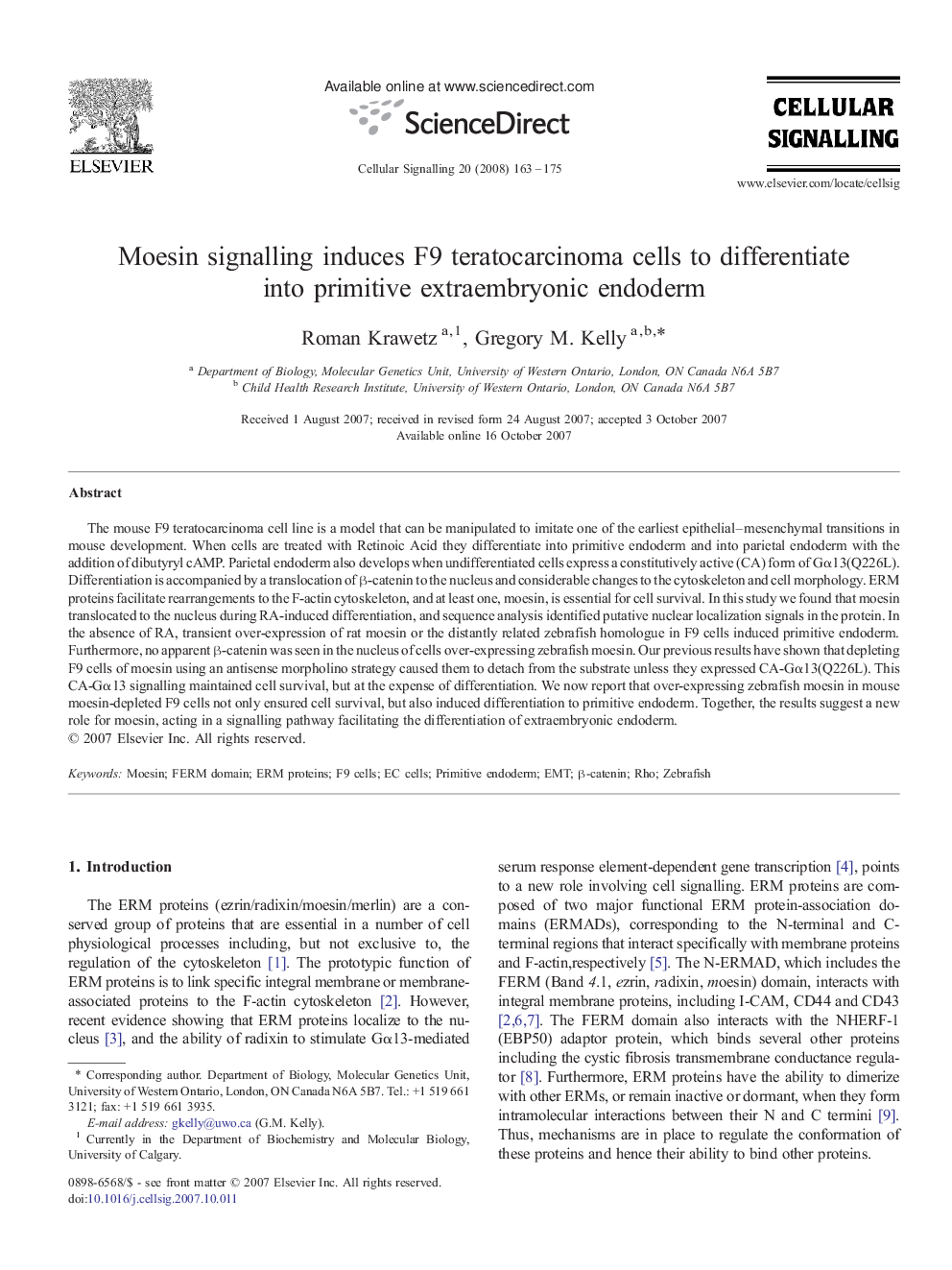| Article ID | Journal | Published Year | Pages | File Type |
|---|---|---|---|---|
| 1964504 | Cellular Signalling | 2008 | 13 Pages |
The mouse F9 teratocarcinoma cell line is a model that can be manipulated to imitate one of the earliest epithelial–mesenchymal transitions in mouse development. When cells are treated with Retinoic Acid they differentiate into primitive endoderm and into parietal endoderm with the addition of dibutyryl cAMP. Parietal endoderm also develops when undifferentiated cells express a constitutively active (CA) form of Gα13(Q226L). Differentiation is accompanied by a translocation of β-catenin to the nucleus and considerable changes to the cytoskeleton and cell morphology. ERM proteins facilitate rearrangements to the F-actin cytoskeleton, and at least one, moesin, is essential for cell survival. In this study we found that moesin translocated to the nucleus during RA-induced differentiation, and sequence analysis identified putative nuclear localization signals in the protein. In the absence of RA, transient over-expression of rat moesin or the distantly related zebrafish homologue in F9 cells induced primitive endoderm. Furthermore, no apparent β-catenin was seen in the nucleus of cells over-expressing zebrafish moesin. Our previous results have shown that depleting F9 cells of moesin using an antisense morpholino strategy caused them to detach from the substrate unless they expressed CA-Gα13(Q226L). This CA-Gα13 signalling maintained cell survival, but at the expense of differentiation. We now report that over-expressing zebrafish moesin in mouse moesin-depleted F9 cells not only ensured cell survival, but also induced differentiation to primitive endoderm. Together, the results suggest a new role for moesin, acting in a signalling pathway facilitating the differentiation of extraembryonic endoderm.
